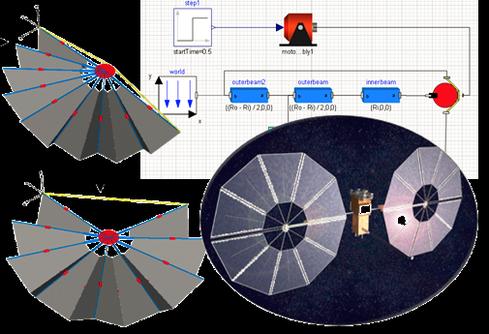The space agency's Small Business Innovation Research program selects 108 proposals from small US firms offering technology ideas with commercial potential.


Internet Of Things: 8 Cost-Cutting Ideas For Government
Internet Of Things: 8 Cost-Cutting Ideas For Government (Click image for larger view and slideshow.)
NASA's belief that big ideas can come from small businesses has led the space agency to select 108 proposals from 99 small US firms that might support future missions and hold promise for commercialization.
The proposals span a variety of topic areas, including next-generation sensors, space communications and navigation, robotics, health monitoring for astronauts, in-space propulsion, and advanced telescope systems to enable a new class of observatories.
Five of the companies selected will focus on IT projects, such as technologies for large-scale numerical simulation. Accelogic LLC submitted a proposal to help NASA accelerate communication-intensive applications through data compression techniques. The Florida company provides accelerated field-programmable gate array numerical libraries, which are used to solve complex computational problems. The compression technology has potential uses in aerospace, weather forecasting, and climate research.
[What can NASA do with 3D printing for future missions? Take a look: NASA Explores 3D Printing: 5 Cool Projects]
Another company, Phoenix Integration, has proposed creating a "commercially viable" integrated visualization environment, which could be used for rapid evaluation of competing vehicle and mission concepts.
The list of proposals also includes a pitch for software architecture to addresses the challenges of multiple spacecraft operating in close proximity, as well as a way to combine satellite-sensing data with weather forecasts to improve rice production on Earth.
This marks the second phase of NASA's Small Business Innovation Research (SBIR) Program, designed for technology companies that want to participate in government-sponsored research and development efforts. The program consists of three phases. Phase I establishes the concept, Phase II focuses on development and delivery, and Phase III is the commercialization of the technology or service.
The selected projects -- from 99 companies in 26 states -- have a total value of approximately $87 million, according to NASA. The companies must now begin negotiations with NASA for contract awards.
"We see the benefits of small businesses and their SBIR-funded technology working for us every day, whether here on Earth in our air traffic control systems or on the surface of Mars and the technology behind NASA's Mars Curiosity rover," Michael Gazarik, NASA associate administrator for space technology, said in a press release. "Small businesses are bringing innovation to the marketplace while creating new products, new jobs, and strengthening our economy."
This year's proposals selected in Phase II expand on the results of recently completed Phase I projects, which were six-month contracts ranging from $125,000 to $225,000. In comparison, Phase II projects last approximately two years.
Find out how a government program is putting cloud computing on the fast track to better security. Also in the Cloud Security issue of InformationWeek Government: Defense CIO Teri Takai on why FedRAMP helps everyone.
About the Author(s)
You May Also Like







